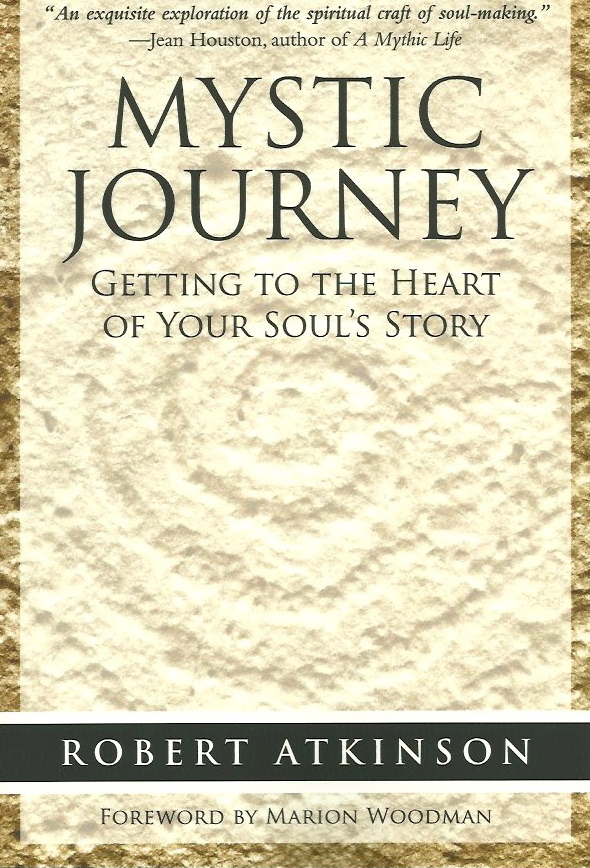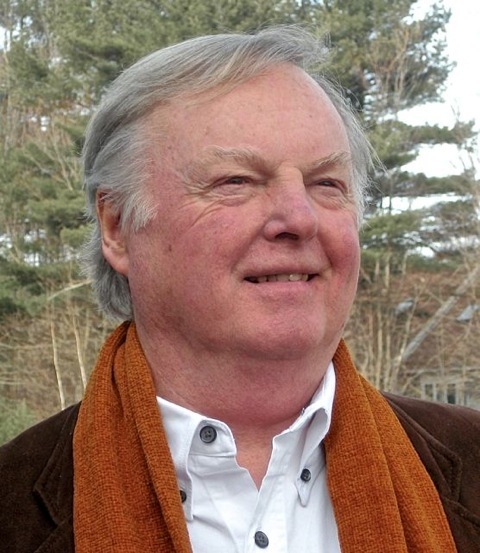Robert Atkinson is one of those people who may be better known outside of Maine than in his own community.
Atkinson teaches at the University of Southern Maine in the College of Education and Human Development, where he also directs the Life Story Commons.
Those disciplines may appear narrowly focused, but Atkinson, who lives in Scarborough, is known nationally for his work in helping people realize their full potential. He helps people tell their life stories in ways that connect them with their personal heritage and their communities.
He has written eight books, including two that have been translated into multiple languages and are used in what he calls “various personal growth and life review settings.”
He is a folklorist with a remarkably interesting life. He has sailed with folk music pioneer Pete Seeger, attended Woodstock and hung out with Arlo Guthrie in the Berkshires.
He has collected many degrees from many institutions. At USM, he was the first divinity scholar and co-founder of the Russell Scholars Program. He has taught a weeklong course sailing the coast of Maine in a traditional schooner, and is an accomplished photographer.
Atkinson’s latest book is “Mystic Journey: Getting to the Heart of Your Soul’s Story.” We caught up with him last week.
Q: The idea of reaching all of our potential as human beings is appealing. In your experience, do most people fall short of that threshold?
A: Well, not wanting to make any kind of a judgment about most people, I will say that it is an extremely challenging proposition for anyone, but it is certainly not out of our reach, either. I think we all have the capacity to reach our own potential, we may just not realize this, believe in it, or maybe not put enough effort into the process. It’s a matter of whether it becomes a conscious effort and whether that becomes a priority in our life or not.
For those who are conscious of this desire, and who continue to make this a focus, reaching our innate potential becomes much more of a possibility. James Hillman says in his “acorn theory” that we are born with an image of the person we are to become, and our soul plays a key role in guiding us through the pattern of the life we live toward our destiny.
That unknown, unexpressed potential in ourselves has also been referred to as the image of God within us. So a big part of our challenge is getting to know our own soul.
Q: How does this book help us get there?
A: The book is about how personal and collective transformation are interdependent, and how we need to experience the process of transformation in our lives to move us along toward our own potential.
It is designed to help us focus on three ways we can get to know our own soul better: By remembering where we came from, who we are at our depths and where we are going; by consciously living within the timeless pattern of transformation and allowing its universal motifs and archetypes to guide and comfort us; and by acquiring the virtues and attributes at the heart of our common spiritual heritage.
This is a process referred to in the book as soul-making, which always awakens noble sentiments within us and spurs us on toward carrying out our highest purpose.
Q: Define soul-making.
A: I guess the place to start is with 19th-century English poet John Keats, who called this world “the vale of soul-making.” He meant that the conflict, pain and struggle of this world are necessary to shape the soul into its true and lasting identity. Soul-making is what happens when the soul experiences pretty much everything that is part of this life — especially the potentially transformative moments like when joy and sorrow intermingle. There are many moments of truth like this that give life a deeper meaning for us.
It’s all about fully experiencing and taking in the clash and merging of opposites in this world. Marion Woodman says, “Soul-making is constantly confronting the paradox that an eternal being is dwelling in a temporal body.” This world is made not just for our physical well-being but also for our spiritual growth.
Q: You write that keeping an eternal perspective in mind helps us lead full and enriched lives. What do you mean by an “eternal perspective”?
A: One of the things that all the world’s religions agree upon is that the soul is eternal, that it comes from and returns to God. Even indigenous world views include this. As Chief Seattle said, “There is no death, only a change of worlds.”
Because the concept of eternal life is left out of theories of human development, we might say that psychology offers a limited perspective of the life course it is trying to understand. As a professor of human development, I’ve tried to include this perspective by bringing in the views of the world’s religious traditions, and asking: What would a Hindu, a Buddhist or a Muslim say about the purpose of life or our destiny?
If we consider the possibility that we are human beings with an eternal soul, that might also shift our perspective of life considerably and maybe even alter the way we live our lives on a daily basis. We need a means to address the mysteries of our lives, and how we can understand and relate to the infinite.
An eternal perspective on the lives we are living could also be a huge factor in making certain actions and behaviors a priority on a day-to-day basis that would also help us in reaching our fullest potential, while also making the world a better place.
Q: Is this a book about religion?
A: Well, religion is a huge topic, so I guess the short answer is yes, but that would be in an inclusive way. The book takes a multifaith approach, drawing from many spiritual traditions, to address a very personal matter — who we are, what we’re doing here and where we’re going. So, it looks into many spiritual paths and principles to illustrate how some of the universals of religion contribute significantly to our personal growth and development.
Part Three of the book is about getting to know the virtues and qualities at the heart of our common spiritual heritage, and as we become conscious of being on our own spiritual journey, how we become committed to not only fulfilling our own deepest potential but also helping others do the same for themselves.
It’s really about how the mystic journey of the soul leads us all to a path of service.
Q: Am I correct in thinking the process of soul-making is lifelong? How do we know when we have achieved it?
A: Yes, I think it is. Just like physical or biological development is a lifelong process and has stages to it. Each stage has its markers or tasks so we can keep track of where we are and what we have left to do.
Soul-making is also a lifelong process where pretty much every step of the way is somewhat known and laid out for us. The world’s wisdom traditions provide all the guideposts we need for the journey of the soul, and for the lifelong process of soul-making.
Part One looks at a couple of the better-known guideposts to follow, like the mystic way, which outlines the stages in the process of the development of the soul. And Part Two examines the details, or stages, of the pattern of transformation, which repeats itself many times in our lives.
The difference between physical development and spiritual development is that physical development is a lifelong process that continues right up to death, and we can tell pretty well at each stage whether we have achieved what we are capable of or not.
Soul-making is similar; it has its stages too, by which we can tell what we’ve achieved, but this process continues even beyond death, with what happens then being largely determined by the actions we take in this world and by the virtues and qualities we have acquired in this life.
Q: You are the director of the Life Story Commons at USM. Tell me about that program.
A: Sure. What started out some 25 years ago as the Center for the Study of Lives was created to record and preserve the life stories of people of all ages and backgrounds.
It’s been a small but focused effort to celebrate individual lives and strengthen community bonds through bringing people of all generations together to share life stories.
Over the years, we’ve done this by building a now fully searchable online archive of life stories, which also has a life-story-telling protocol anyone can follow to write or tell their own life story, and also by occasionally holding public presentations of life stories, like stage readings or panel discussions.
The Commons is founded on the belief that every person has an important story to tell about the life they have lived.
Sharing our life stories, especially between multigenerational and multicultural groups, becomes an important way we can gain a greater appreciation of both our commonalities and differences, and maybe even recognize that we are all members of one human family.
Staff Writer Bob Keyes can be contacted at 791-6457 or:
bkeyes@pressherald.com
Twitter: pphbkeyes
Send questions/comments to the editors.





Success. Please wait for the page to reload. If the page does not reload within 5 seconds, please refresh the page.
Enter your email and password to access comments.
Hi, to comment on stories you must . This profile is in addition to your subscription and website login.
Already have a commenting profile? .
Invalid username/password.
Please check your email to confirm and complete your registration.
Only subscribers are eligible to post comments. Please subscribe or login first for digital access. Here’s why.
Use the form below to reset your password. When you've submitted your account email, we will send an email with a reset code.